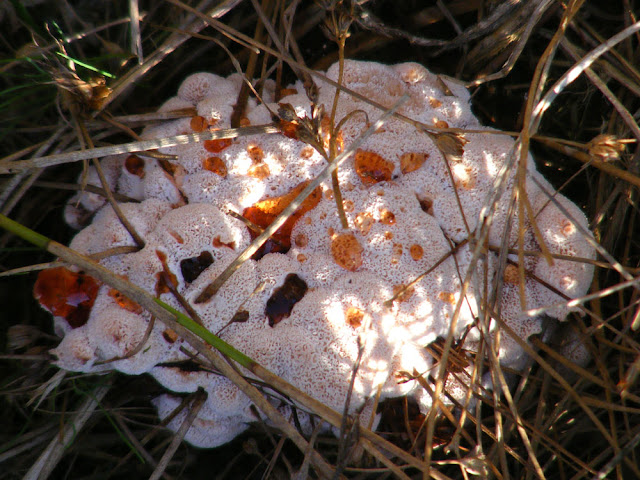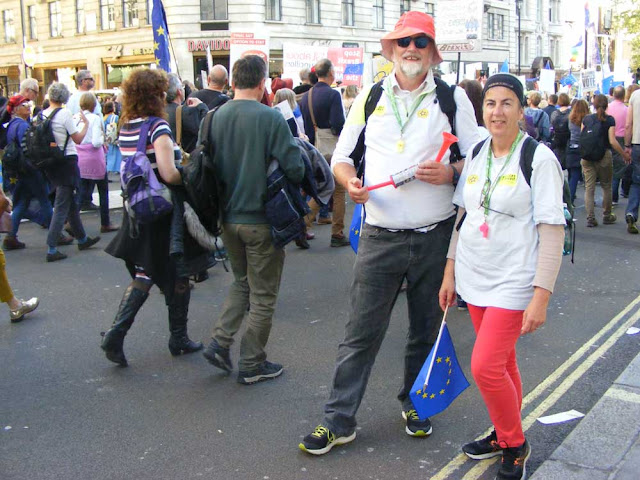About six months ago I started hearing about a
proposal to erect ten wind turbines along a ridge between Le Grand Pressigny and Charnizay. Everyone I spoke to at that point assumed I would be against the project, as they were. I was encouraged to go along to the town hall and look at the documentation for the project and to sign a petition against it.
I never got round to checking it out at the town hall, but slowly more and more information started to be widely disseminated. My natural inclination would be to be for wind turbines, unless they are sited inappropriately. That means breaking up important habitat. It does not mean spoiling my view or being located too close to my home. Nothing I read about the project raised particular alarm bells.
Over the last month or so the wind turbine project has been the super hot topic at social occasions. I know and like many of the people who belong to a new association dedicated to stopping the project. They are quite visible and vocal, to the extent that at a party a few weeks ago my friends Dominique (female) and Denise were delighted to find that I was for the project. Like me, they had been starting to think they were the only ones.
Flora Pastre (second left) answering questions from the public.
There have been a series of public meetings to allow the wind turbine company to inform and consult with the locals. I went along when the representative from the company was at Le Grand Pressigny, answering questions and presenting the project. Of the half dozen people present, four of them were friends and several were against the project. Later that day I accidentally gatecrashed the landowners meeting with the company in Le Petit Pressigny, which was a somewhat different affair. They were offered drinks and nibbles and were generally for the project.
I've now had a lot of contact with both sides and can summarise the situation thus:
Those for the project point out that
- Indre et Loire currently has no wind turbines at all (the implication being that they are not doing their share -- after all, there are now hundreds of turbines in the neighbouring département of Vienne).
- We need to start moving to renewables.
- The land chosen is open farmland.
- This is a poor rural area and it is an opportunity for small scale low income farmers to earn a bit of extra income. (Here is a link to a blog post that I wrote about one of the farmers in the area of the project.)
- The venture is low risk as the regulations say that at the end of their 25 year lifespan every part of the turbines must be removed and recycled.
- 18 months of ecological and biodiversity surveys began in April and will assess impact on the natural environment and inform the placement of the turbines.
- Wind levels across the site have been monitored to ensure they will be sufficient to make the project worthwhile.
Those against the project say
- This isn't Berry or the Beauce with huge flat expanses of open cereal culture. The scale of the turbines is too large for the system of small fields that exist on the proposed site.
- Wind power is too unreliable to be useful.
- The landowners are being offered 2% of profits, so if there are no profits the landowners will get nothing.
- Wind turbine companies have a reputation for gathering in lots of public funding and private investment, erecting the turbines, but then going bust.
- If the company goes bust then the low income small scale farmers will be left with the responsibility to get rid of the turbines at the end of their working life.
- People visit this area because it is an unspoilt small scale mosaic of fields, woodland and villages and the turbines don't fit this bucolic scene. (Note: this is a French viewpoint, where 50% of wind turbine projects are opposed by the public. An Australian friend has pointed out that Australian visitors would much rather see wind turbines than the cooling towers of nuclear power plants.)
- Wind turbines kill birds and bats. The biodiversity surveys are being done in a period when the population of raptors such as harriers has not yet recovered from a previous vole population crash. The surveyors will not find nesting raptors this year or next because they likely won't return until 2020, by which time it will be too late to take them into account.
- The project appears to be borderline profitable, according to the wind turbine company's own information.
- Wind turbines reduce real estate values.
- Wind turbines cause noise pollution.
My own observations would be that
- The project has split local opinion about 50/50. Feelings are running high, with the antis going to the effort and expense of setting up a formal association to fight the project, and the pros slashing the antis banners.
- Some of the anti wind turbine feeling is, inevitably, nimbyism.
- There is a strong tendency amongst those against the project to simply not believe anything the wind turbine company says and to not accept the project because it isn't perfect.There is no acknowledgement that projects and technologies necessarily develop over time. There is no acceptance that the wind turbine company is acting in good faith.
- There is a strong belief amongst those against the project that it is a done deal and any consultation is lip service. There is no acceptance that their own arguments might not be relevant, strong enough or have been dealt with appropriately already.
- The person who has impressed me the most over the course of my various discussions is Flora Pastre, the project manager in charge of prospection. She's young, she's sassy and she answered everyone's questions lucidly, at length and without hesitation. Occasionally she admitted she didn't know the answer, but mostly she had obviously encountered the questions before and had the answers at her finger tips.
- The two people on the side against the project whose opinions I find most credible are both retired from careers where they were involved with dealing with wind turbine companies. Neither are French (one's Dutch, one's Canadian). They are both deeply cynical about the wind turbine company's motives and the long term outcome of the project.
- I've worked in the heritage and nature conservation sector for many years. I am well used to big lumbering consultative projects and the fact that they take ages to get to the action bit. It can be hard to accept that just because your ideas weren't included in the final project it does not mean you weren't listened to and your input considered seriously.
- It has been a lesson in how important the French concept known as la vie associative is. Joining a club is not just to enhance your social life, it is to achieve change for the better. It is to engage in your community by working together collaboratively and is one of the pillars of French society. It's why when you apply for French citizenship you are quizzed about whether you belong to any associations. There is an expectation that you do and in all likelihood there is a political element at some level. The associations give their members a voice in public affairs. That's why those against the wind turbines formalised their group by creating a legal association. That's why the pro wind turbines mayor of Le Petit Pressigny is muttering about creating his own association to promote the project.
- The problems involving wildlife and habitat can all be solved by good consultative processes. The turbines can be sited in such a way as to avoid or minimise disturbance to wildlife once the ecological studies have been done. This is rapidly developing science and wind turbine companies are well used to dealing with this issue now.
- Wind turbines, given time, will become industrial icons of our age, just as 19th century railway viaducts did in the 20th century.
- Studies looking at actual sales figures rather than real estate valuations show that nearby wind turbines have no statistically significant impact on prices overall, although they may impact on individual properties (both negatively and positively).
- The latest regulations and recommendations regarding noise pollution from wind turbines in France is dealt with in this article (in English). Basically, sometimes there might be a problem, in which case the expectation is that it is monitored and ultimately dealt with.
Note: This post was edited on 27 October 2018 following feedback from several people. In particular, changes have been made to the points about vole/raptor boom/bust cycles and the biodiversity surveying, as well as the partisan nature of two of the people pictured. Other additional notes have been added.


















































